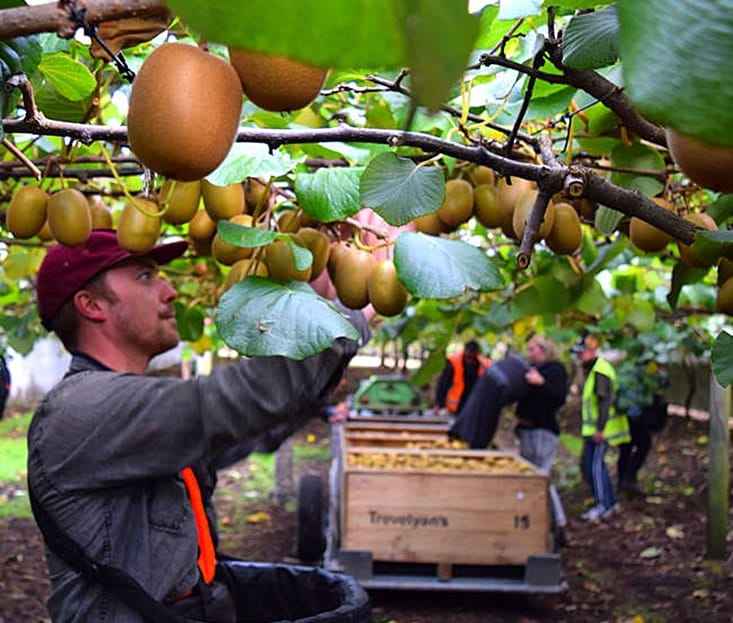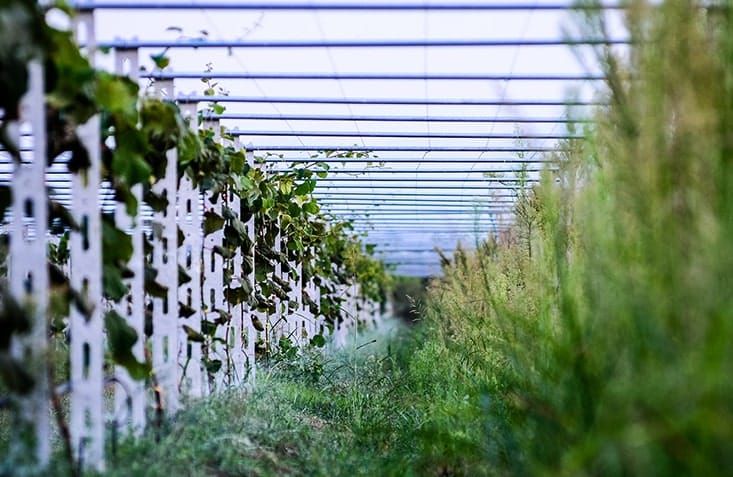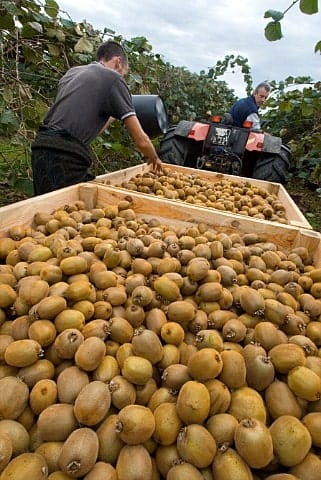
Kiwi
Quick Access :
General information
General
Information :
Information :
It has a thin, hair-like, fibrous, sour-but-edible light brown skin and light green or golden flesh with rows of small, black, edible seeds. The fruit has a soft texture with a sweet and unique flavor. Kiwi is a plant either male or female. The male plants have flowers which produce pollen, the feminine receive the pollen to fertilize their ovules and grow fruit; most kiwifruit requires a male plant to pollinate the female plant. For a good yield of fruit, one male vine is considered an adequate for every three to eight female vines. Some varieties can self-pollinate, but even they produce a greater and more reliable yield when pollinated by male kiwifruit. Their fruits are quite variable, although most are easily recognized as kiwifruit because of their appearance and shape. The skin of the fruit differs in size, hairiness and color. The flesh varies in color, juiciness, texture and taste. Some fruits are unpalatable, while others taste considerably better than the majority of commercial cultivars.

Kiwis are small fruits that pack a lot of flavor and plenty of health benefits. Their green flesh is sweet and tangy. It’s also full of nutrients like vitamin C, vitamin K, vitamin E, folate, and potassium.
Product benefits
Kiwi
Benefits :
- Containing vitamin C
- Having antioxidants
- Helping to treat people with asthma
- Having plenty of fiber
- Being good for digestion
- Containing a proteolytic enzyme
- Being nutrient-dense and full of vitamin C
- boosting your immune system to ward off disease
- Helping to manage our blood pressure
- Reducing blood clotting
How to Harvest
How To
Harvest :
Kiwifruit is picked by hand and commercially grown on sturdy support structures, as it could be produced several tons per hectare, more than the rather weak vines could be supported. These are generally equipped with a watering system for irrigation and frost protection in the spring. Cut the fruit off the vine with a small piece of stem that is attached to the fruit; fruits with some stem attached will keep longer.


Kiwifruit vines require vigorous pruning, the same as grapevines. Fruit is borne on one-year-old and older canes, but production declines as each cane ages. Canes should be pruned off and replaced after their third year. In the northern hemisphere the fruit ripens in November, while in the southern it ripens in May. Four-year-old plants could be produced up to 14,000 lbs. per acre while eight-year-old plants can produce 18,000 lbs. per acre. The plants produce their maximum at 8 to 10 years old. The seasonal yields are variable, a heavy crop on a vine one season generally comes with a light crop in the following season. Fruits harvested when firm will be ripened and also could be stored properly for long periods. This allows fruit to be sent to market up to 8 weeks after harvest.
Firm kiwifruit ripens after a few days to a week when stored at room temperature, but should not be kept in direct sunlight. Faster ripening occurs when placed in a paper bag with an apple, pear, or banana. Once a kiwifruit is ripe, however, it would be preserved optimally when stored far from other fruits, as it is very sensitive to the ethylene gas they may emit, thereby tending to over-ripen even in the refrigerator. If stored appropriately, ripe kiwifruit normally keeps for about one to two weeks.

Packaging
Packaging :
We can provide kiwi in each quantity that our client wants, there are no limited in weight and destination or in packed.
